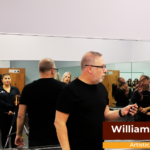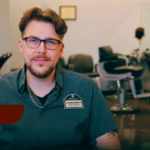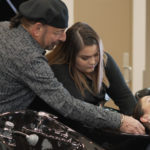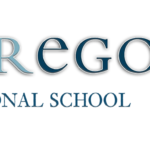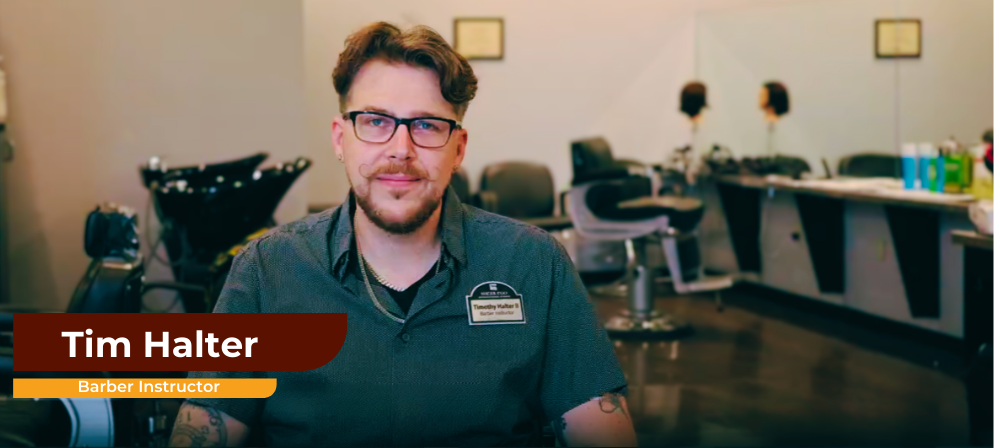
One of the fastest-growing specialties in the personal care and grooming industry is one that has been around for thousands of years. Widely considered to be one of the world’s oldest professions, barbering combines tradition and artistry, making it an ideal career for those who appreciate time-honored techniques and creative expression.
It’s also big business. In fact, the U.S. barber shop industry reached an estimated value of $6.1 billion in 2023 and is projected to grow year-over-year.
It's no wonder that more people than ever are considering barbering as a dynamic and fulfilling career. We sat down with Shear Ego’s award-winning Barber/Styling Instructor Tim Halter to get his take on the resurgence of barbering, his own journey to becoming a Master Barber and how Shear Ego’s Barber/Styling program prepares the next generation of aspiring barbers.
Interviewer: You’ve been a barber for many years, you have your own barbershop, and are a Barber/Styling instructor at Shear Ego. Clearly, you have a passion for this! How did you first get interested in barbering?
Mr. Halter: I'm an 80s baby, so I grew up a 90s kid. Bowl cuts were the big style—and then they weren't. My mom had been cutting our hair up to that point, and when I was around 12 to 13 years old, I ended up going to the barbershop. And I went home and basically told my mom she wasn't going to cut my brother's hair anymore because I could do it. So by middle school, I was cutting my brother's hair, and by high school, I was staying after school to work at a barbershop. It was clear to me early on that barbering was my future.
Growing up, I was very artistic and very hands-on. I was passionate about making people look good, the ability to work with my hands and to create, and the ability to work directly with people one on one. I spent more and more time in the barbershop and ultimately decided to attend Shear Ego and get my barber license.
Interviewer: Many aspiring barbers weigh the option of a two-year apprenticeship vs. a 600-hour educational program. What advantages do you see in a dedicated educational program?
Mr. Halter: As a barbershop owner who has apprenticed several barbers, I've seen the gaps that can exist in traditional apprenticeships. An apprenticeship may provide hands-on experience, but it often lacks the comprehensive education needed to understand all aspects of the profession, including state licensing requirements.
Barber programs--especially a focused 4.5-month program like Shear Ego’s--have a structured curriculum so that students learn both the practical skills and the theoretical knowledge. At Shear Ego, our program bridges the gaps between learning and real-world experience. By the time they are through the program, our students are well-prepared for the state board exams and to begin their careers.
Interviewer: What would you say makes Shear Ego’s Barber/Styling program unique?
Mr. Halter: Our program is unique because it’s taught by instructors who are still actively working in the industry. This means we're always up-to-date with the latest trends and techniques. Our curriculum goes beyond basic haircuts, teaching students to master various tools, including razors, scissors, and clippers.
Most importantly, we teach our students the importance of preparing for the state board exams. Our students are some of the most prepared candidates, and we make sure they not only excel in practical skills but also meet all regulatory requirements to get licensed.
Interviewer: The barbering industry is experiencing a resurgence, with its market projected to grow significantly in the coming years. What do you think is driving that growth?
Mr. Halter: Social media has played a big role. It’s a place where barbers can gain recognition and clients can discover new styles. The ability to instantly share and view creative haircuts has helped barbering evolve from a profession to a platform for artistic expression.
Interviewer: What trends are you seeing in the industry?
Mr. Halter: Trends tend to be cyclical. Whether it’s fashion or hairstyles, it’s always evolving. As I was coming up, clients would ask for the “David Beckham”. Then it became the “Odell Beckham (Jr)”. Who knows what next year is going to entail?
Interviewer: Any last words of wisdom for aspiring barbers?
Mr. Halter: I try to emphasize to my students to build a network of fellow barbers instead of viewing them as competition. There are more clients than there are barbers, and there always will be. If you really focus on putting out a quality haircut and building a clientele working with the people, you'll be just fine.
This interview was edited for clarity and length.

